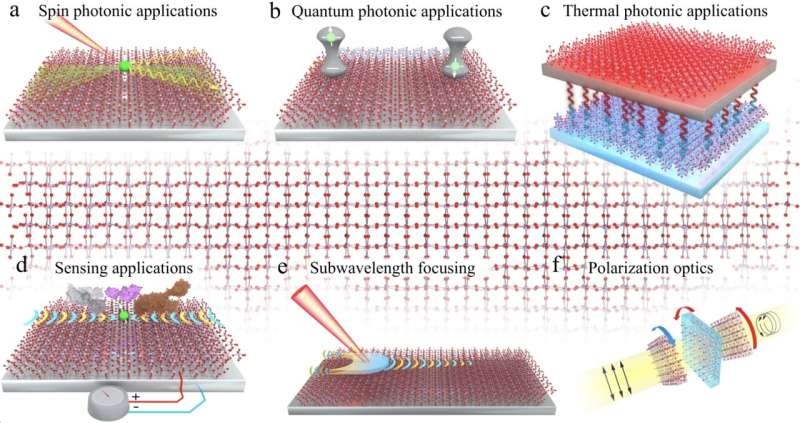With a potential myriad of applications in quantum computing and thermal management, researchers at the University of Minnesota Twin Cities have discovered independent topological magnetization states between complementary magnets using formidably fast technique. They demonstrated new prospects for the emergence of the smallest quantum computers and more efficient apparatuses using ‘planar hyperbolic polaritons’.

Opening Up Polaritons
Whereas polaritons are a unique hybrid particle that arise from the interaction of light (photons) with matter (excitons, phonons, plasmons). When these meet, a new kind of particle is formed with unusual attributes that can be used for different purposes.
In the study, a type of polariton called ‘planar hyperbolic polaritons’ was considered by researchers. If light of certain frequency shines on them, these polaritons have a different dispersion in the matter space: their wavelength actually changes with frequency (or energy), making them indeed a very unusual kind of electromagnetic excitation. Understanding and minimizing this dispersion allows the researchers to engineer which way light points, in the same way a lens or mirror can focus or direct light.
Compact Quantum Computers
This research has a lot of potential applications, but perhaps its most important and direct use is in quantum computing. Quantum computers perform computation using quantum mechanical phenomena, and promise to dramatically outperform classical machines on particular problems. The problem is modern quantum computers come with complexities and are cumbersome to build.
The researchers suggest that these properties could be exploited to add a new quality to planar hyperbolic polaritons: the ability to function as a ‘polariton qubit’, a fundamental unit of quantum information. The polariton qubits described here havethe potential to enable highly compact on-chip architectures for quantum information processing, thereby alleviating the stringent fabrication requirements that have so far limited accessibility of quantum computers
If successful, the discovery could enable practical, large-scale quantum computing to areas such as cryptography, materials science and drug discovery.
Conclusion
The ability to control planar hyperbolic polaritons has implications in quantum computing, and could prove useful for thermal applications as well. Through tapping into this unusual hybrid particle population, researchers are providing a new area of technology innovation that could potentially significantly enhance our computing and energy efficiency. We can expect many more exciting developments to follow in the future as ‘polaritonics’ emerges.
